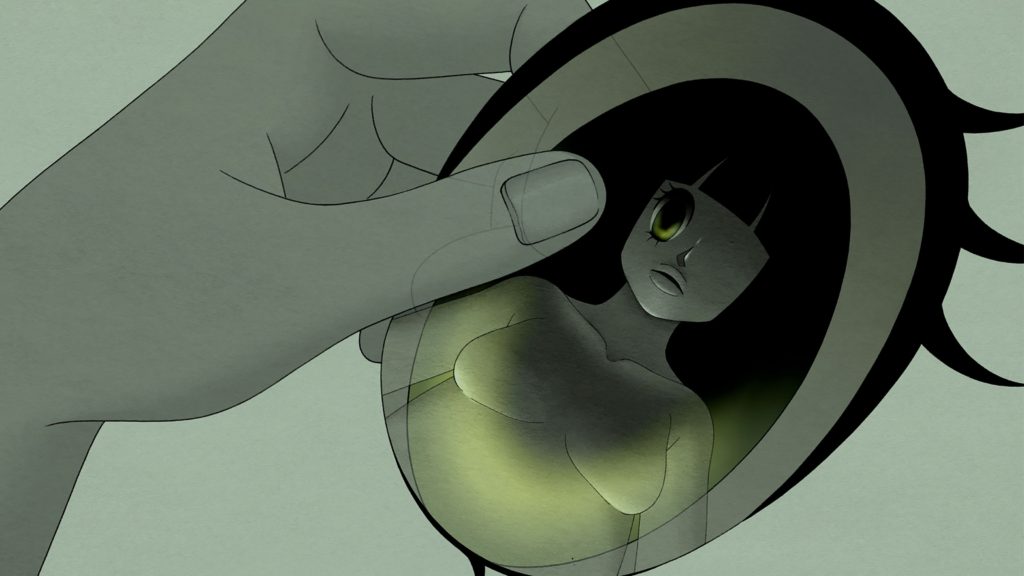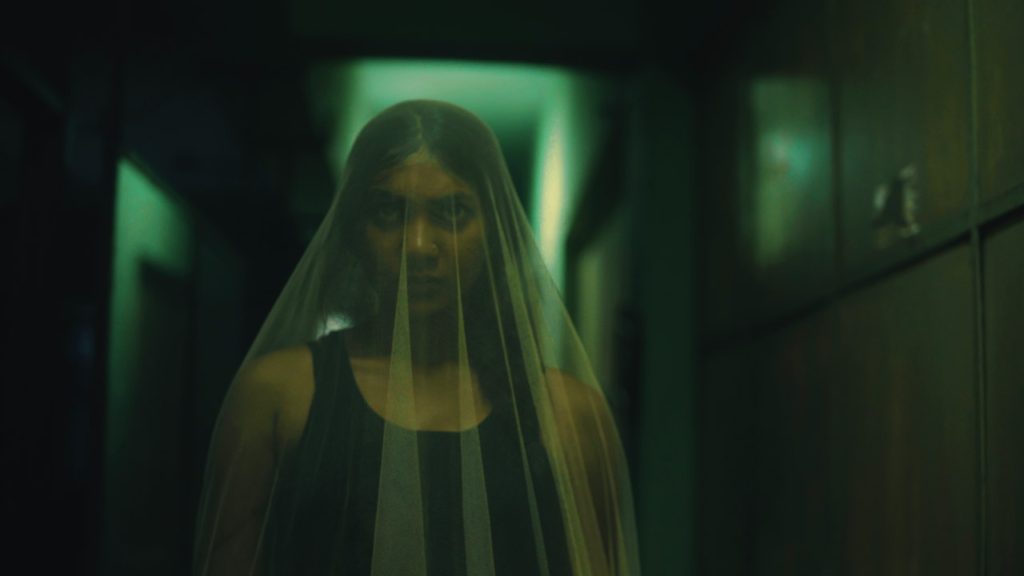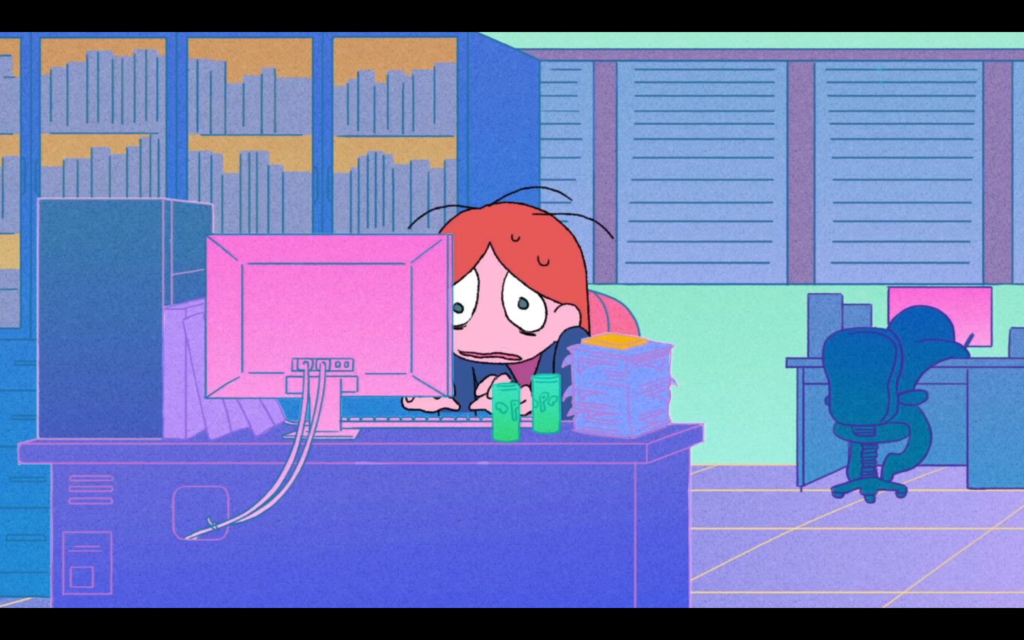NIFFF report: Asian shorts close-up

The focus on Asia that dominated this year’s (and also the last few years’) NIFFF also reflected in the selection of shorts, where the short films from Asia got their own slot. The most notable difference between the Asian, the international and the Swiss shorts programmes is that the Asian one is, well, the most genre in its approach to the fantasy world. From 5 films in the slot, three of them were live action, all of them near or over 20 minutes in length, and also all of them were genre-oriented in the elevated or the classical form. The remaining two were animated works, 6 or 7 minutes long each and both of them are more artsy and free-flowing in their treatment of the fantastic worlds.
The longest of the bunch, clocking just over 30 minutes, is Leo Liu’s Keyboard Warrior (2022). Interestingly, this one is simultaneously the most rooted in reality, dealing with the problems of the parallel lives in the physical and in the cyber-world, but also the most faithful to the quintessentially Asian genre of martial arts flick. The titular character, Ying Hong (Teddy-Ray Huang, who also served as the film’s lead stuntman, choreographer and “action director”) is a walking contradiction: a YouTuber who insists on tradition of the art of Kung-Fu and who struggles to reach the popularity of some other fight bloggers, like The Giant Boxer. Although he likes to pose as a young Bruce Lee for his videos, he is not much of a fighter in real life. Although, one lucky break opens the door for him to reach the fame, but all the perks of it come also with the setbacks of “haters’” comments and challenges from other, proper fighters. Written, directed and edited by Leo Liu, Keyboard Warrior is a crafty film that deftly comments the state of the world today with the means of an all-time favourite genre and which compellingly blends the wide screen cinematography by Wang I-Fan with vertical cellphone shots, lacing both of them with social networks’ graphics. However, Keyboard Warrior has one flaw that could prove to be crucial: with that much of the runtime, the number of supporting and episodic characters and the extras used for the mass scenes in this demanding production, it actually feels a bit like a feature film compressed to the short format.
A connection between the modern world of outsourcing and gig economy and the horror movie sub-genres of a supernatural chiller, ghost flick and a slasher could also be observed in the Thai film OST written and directed by Abhichoke Chandrasen. Our protagonist Jay is a Thai woman who works for a foreign-owned musical studio that has the task to fill the sound scheme of the low-budget ghost movies, and she is on the verge of a breakdown because it seems that she simply cannot finish her work. The reason for that might be the belief that the ghosts from the film, if they are upset or offended by its quality, can come to life and haunt the crew. But is it real or just a figment of her imagination? Relying on nicely creepy special effects make-up and the rapid cuts in Nisarat Meechok’s editing, Chandrasen makes the film jump from one layer to the other in a seamless fashion, while also discreetly dealing with the different aspects of the contemporary Thai society, from its somewhat silly belief in vengeful spirits, to the pressures of materialism imported from the West.
Speaking of the anti-colonial sentiment, Nuhash Humayun’s Moshari also tries to walk along those lines, which should not come as a surprise given the history of the film’s native country of Bangladesh. The story is set in the post-apocalyptic world in which the Western civilization is collapsed under the attacks of the mean creatures of the night (that act like something in between the ghosts, the demons and the vampires), but the former “Third World” still resists the annihilation. People use some sort of home-made nets to hide under them during the hours of sleep in order to protect themselves from the nocturnal menace. Our protagonists are two sisters, Ayra and Apu, who first have to survive each other and then the ghosts. Powered with strong acting, painted in disorientating chiaroscuro contrasts, with the tension dictated by the unnerving soundtrack, Moshari is viscerally effective, although a tad too covert regarding its world-building and its bottom line point.

Regarding the animated shorts in the programme, one could say that Moon Su-jin’s Persona (2022) is more of a metaphor than a fantasy, while its connection to genre is only a flirt with body horror. Our protagonist’s soul wears her body as a suit, until it realizes that it is limiting and dumbing her down. Dialogue-free and animated in 2D anime style, Persona is a smart provocation, but its place is more at the specialized animation festivals on the circuit than at genre- and fantastic ones. On the other hand, Wu Jia-Sin’s Scum (2021) seems just a bit too random regarding its story and too generic regarding its execution in standard digital 2D, with a lot of simple forms, bright colours and the soundtrack that seems lifted from an early-to-mid 90s computer game. As a slideshow of imagery, it is serviceable, but it will not leave neither deep, nor lasting impressions.

















